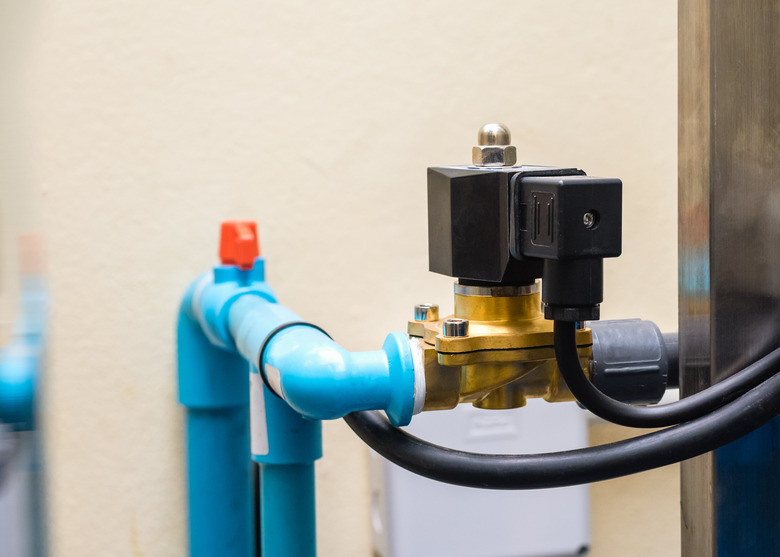How Does A Solenoid Work?
What is a solenoid?
Solenoid is the generic term for a coil of wire used as an electromagnet. It also refers to any device that converts electrical energy to mechanical energy using a solenoid. The device creates a magnetic field from electric current and uses the magnetic field to create linear motion. Common applications of solenoids are to power a switch, like the starter in an automobile, or a valve, such as in a sprinkler system.
How a Solenoid Works
How a Solenoid Works
A solenoid is a coil of wire in a corkscrew shape wrapped around a piston, often made of iron. As in all electromagnets, a magnetic field is created when an electric current passes through the wire. Electromagnets have an advantage over permanent magnets in that they can be switched on and off by the application or removal of the electric current, which is what makes them useful as switches and valves and allows them to be entirely automated.
Like all magnets, the magnetic field of an activated solenoid has positive and negative poles that will attract or repel material sensitive to magnets. In a solenoid, the electromagnetic field causes the piston to either move backward or forward, which is how motion is created by a solenoid coil.
How Does a Solenoid Valve Work?
How Does a Solenoid Valve Work?
In a direct-acting valve, electric current activates the solenoid, which in turn pulls a piston or plunger that would otherwise block air or fluid from flowing. In some solenoid valves, the electromagnetic field does not act directly to open the conduit. In pilot-operated valves, a solenoid moves the plunger, which creates a small opening, and pressure through the opening is what operates the valve seal. In both types, solenoid valves require a constant flow of electrical current to remain open because once the current is stopped, the electromagnetic field disperses and the valve returns to its original closed position.
Electric Solenoids
Electric Solenoids
In an automobile ignition system, the starter solenoid acts as a relay, bringing metal contacts into place to close a circuit. The starter solenoid receives a small electric current when the car's ignition is activated, usually by the turn of the key. The magnetic field of the solenoid then pulls on the contacts, closing the circuit between the car's battery and the starter motor. The starter solenoid requires a constant flow of electricity in order to maintain the circuit, but because the engine is self-powering once started, the solenoid is inactive for most of the time.
Uses for Solenoids
Uses for Solenoids
Solenoids are incredibly versatile and extremely useful. They're found in everything from automated factory equipment to paintball guns and even doorbells. In a chime doorbell, the audible chime is produced when a metal piston strikes a tone bar. The force that moves the piston is the magnetic field of a solenoid that receives electric current when the doorbell is pushed.
Cite This Article
MLA
Nicholson, Joseph. "How Does A Solenoid Work?" sciencing.com, https://www.sciencing.com/a-solenoid-work-4567178/. 13 March 2018.
APA
Nicholson, Joseph. (2018, March 13). How Does A Solenoid Work?. sciencing.com. Retrieved from https://www.sciencing.com/a-solenoid-work-4567178/
Chicago
Nicholson, Joseph. How Does A Solenoid Work? last modified March 24, 2022. https://www.sciencing.com/a-solenoid-work-4567178/
